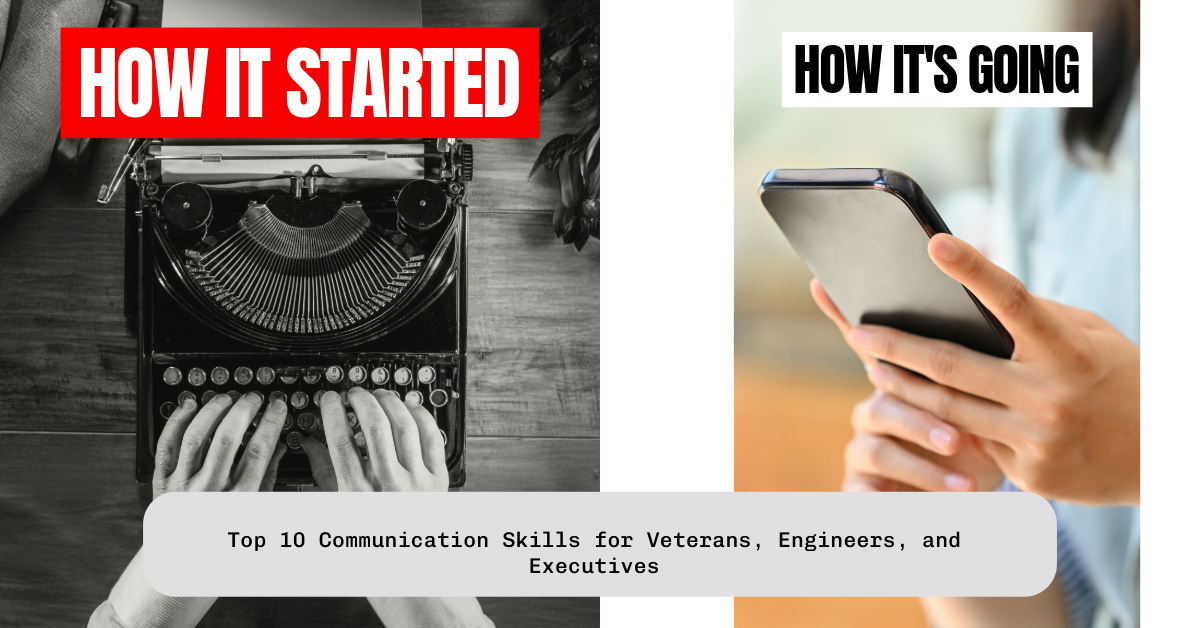In the realm of professional communication, non-verbal cues often speak louder than words. For veterans transitioning into engineering roles and engineers aspiring to leadership positions, mastering non-verbal communication is essential for building rapport, enhancing collaboration, and effectively conveying messages. This article explores the importance of non-verbal communication, its benefits, and practical strategies to develop this skill, with a focus on coaching veterans and engineers.
Understanding Non-Verbal Communication
Non-verbal communication encompasses a range of behaviors that convey messages without the use of words. These include body language, facial expressions, gestures, posture, eye contact, and tone of voice. For veterans and engineers, who often work in technical and high-stakes environments, non-verbal communication can significantly impact their ability to connect with others and lead effectively.
The Importance of Non-Verbal Communication for Veterans
Veterans bring valuable skills and experiences to the civilian workforce, but transitioning from a military to a civilian career can present communication challenges. Non-verbal communication helps veterans effectively convey their confidence, credibility, and leadership qualities, making it easier to connect with colleagues and stakeholders.
Key benefits of non-verbal communication for veterans include:
- Building Trust: Consistent and positive non-verbal cues foster trust and credibility, essential for effective teamwork and leadership.
- Enhancing Adaptability: Understanding and interpreting non-verbal cues aids in adapting to new environments and cultural norms.
- Facilitating Transition: Non-verbal communication helps veterans navigate the nuances of civilian work environments, facilitating a smoother transition.
The Role of Non-Verbal Communication in Engineering
Engineers are often tasked with collaborating on complex projects and presenting technical information to diverse audiences. Non-verbal communication is a critical skill that enhances their ability to convey confidence, clarity, and engagement.
Key benefits of non-verbal communication for engineers include:
- Improved Collaboration: Positive non-verbal cues foster a collaborative work environment and enhance team dynamics.
- Effective Leadership: Engineers aspiring to leadership roles can use non-verbal communication to inspire and motivate their teams.
- Enhanced Client Relations: Understanding and responding to clients’ non-verbal cues leads to better project outcomes and customer satisfaction.
Strategies for Developing Non-Verbal Communication Skills
- Self-Awareness: Become aware of your own non-verbal cues and how they may be perceived by others. Practice maintaining open and positive body language.
- Observe Others: Pay attention to the non-verbal cues of colleagues, clients, and leaders. Observe how they use body language and facial expressions to convey messages.
- Practice Active Listening: Use non-verbal cues such as nodding, maintaining eye contact, and leaning slightly forward to show engagement and interest in the speaker.
- Control Your Tone: Be mindful of your tone of voice, as it can significantly impact how your message is received. Practice using a tone that is calm, confident, and assertive.
- Use Gestures Wisely: Use hand gestures to emphasize key points, but avoid overusing them, as this can be distracting. Ensure that your gestures are natural and complement your message.
- Maintain Eye Contact: Establish and maintain appropriate eye contact to convey confidence and build rapport with your audience.
- Adapt to Cultural Differences: Be aware of cultural differences in non-verbal communication and adapt your behavior accordingly to avoid misunderstandings.
Coaching Veterans and Engineers in Non-Verbal Communication
Coaching programs tailored for veterans and engineers can play a pivotal role in developing non-verbal communication skills. These programs should focus on:
- Customized Training: Addressing the unique communication challenges faced by veterans and engineers through targeted workshops and exercises.
- Mentorship Opportunities: Pairing participants with experienced mentors who can provide guidance and feedback on non-verbal communication practices.
- Real-World Scenarios: Incorporating simulations and role-playing exercises that mimic real-world situations to practice non-verbal communication in a safe environment.
- Continuous Feedback: Providing ongoing feedback and support to reinforce learning and encourage skill development.
Conclusion
Non-verbal communication is a powerful tool that can transform the way veterans and engineers communicate and lead. By mastering this skill, they can enhance collaboration, improve project outcomes, and drive innovation in their respective fields. As the demand for effective communication continues to grow, investing in non-verbal communication will undoubtedly yield significant returns for individuals and organizations alike.
For veterans transitioning to engineering roles and engineers aspiring to leadership positions, non-verbal communication is not just a skill—it’s a pathway to success. By embracing this practice, they can unlock their full potential and make a lasting impact in their careers and communities.
By focusing on non-verbal communication, veterans and engineers can enhance their communication abilities, paving the way for successful transitions and leadership opportunities. Whether you’re a veteran entering the engineering field or an engineer looking to advance your career, mastering non-verbal communication is a crucial step toward achieving your goals.
